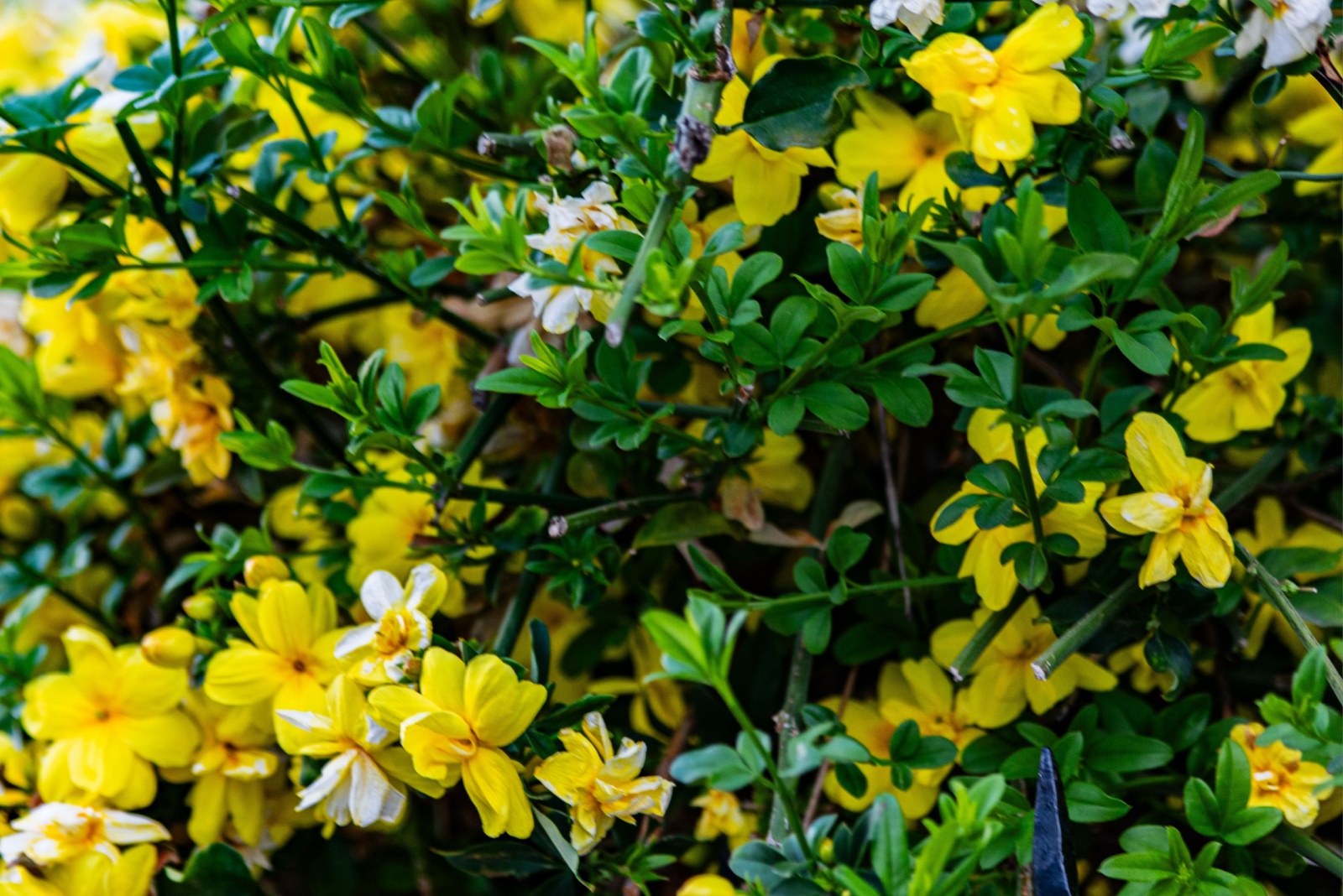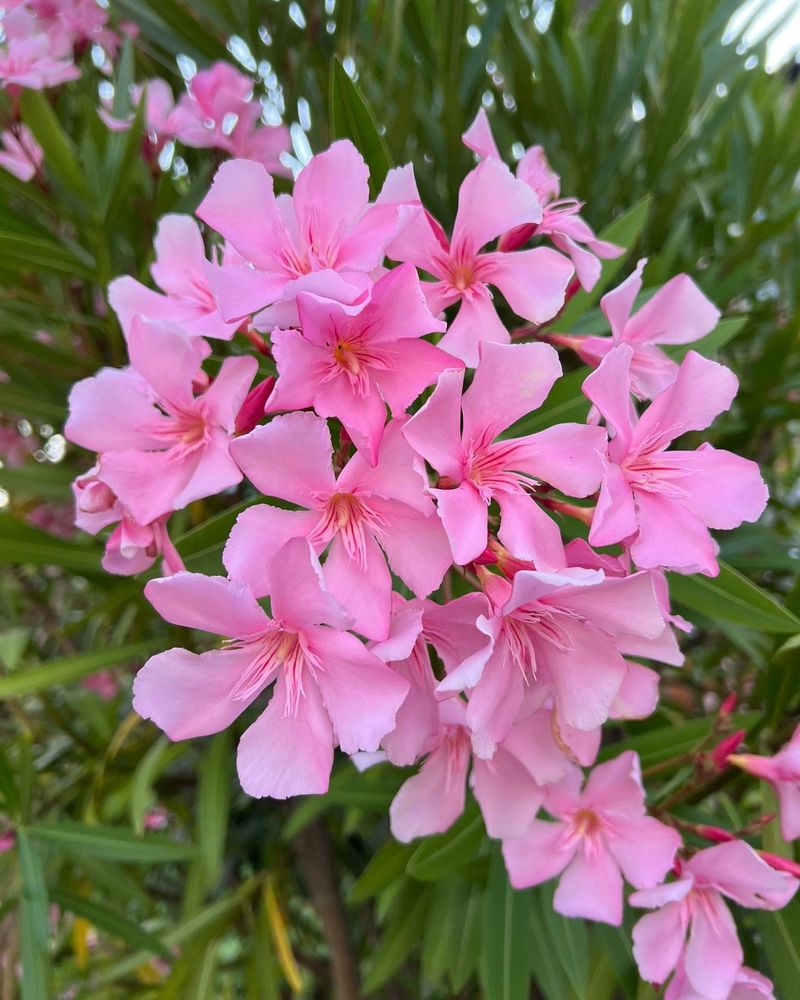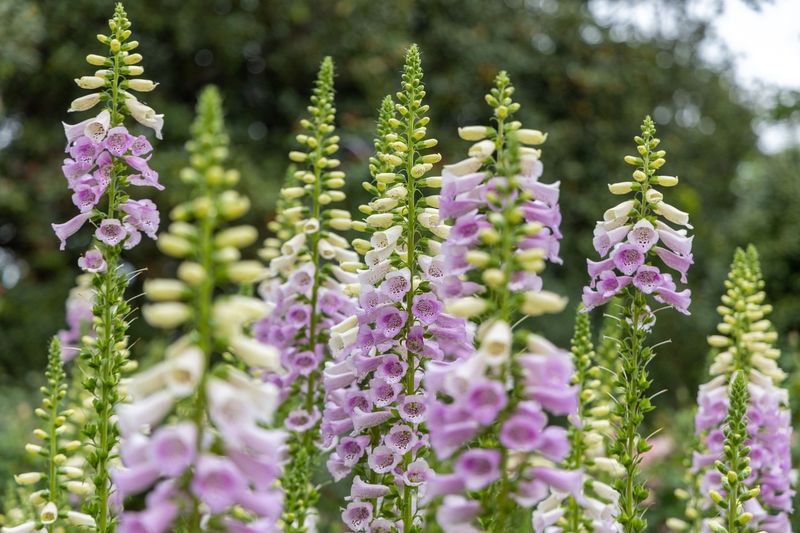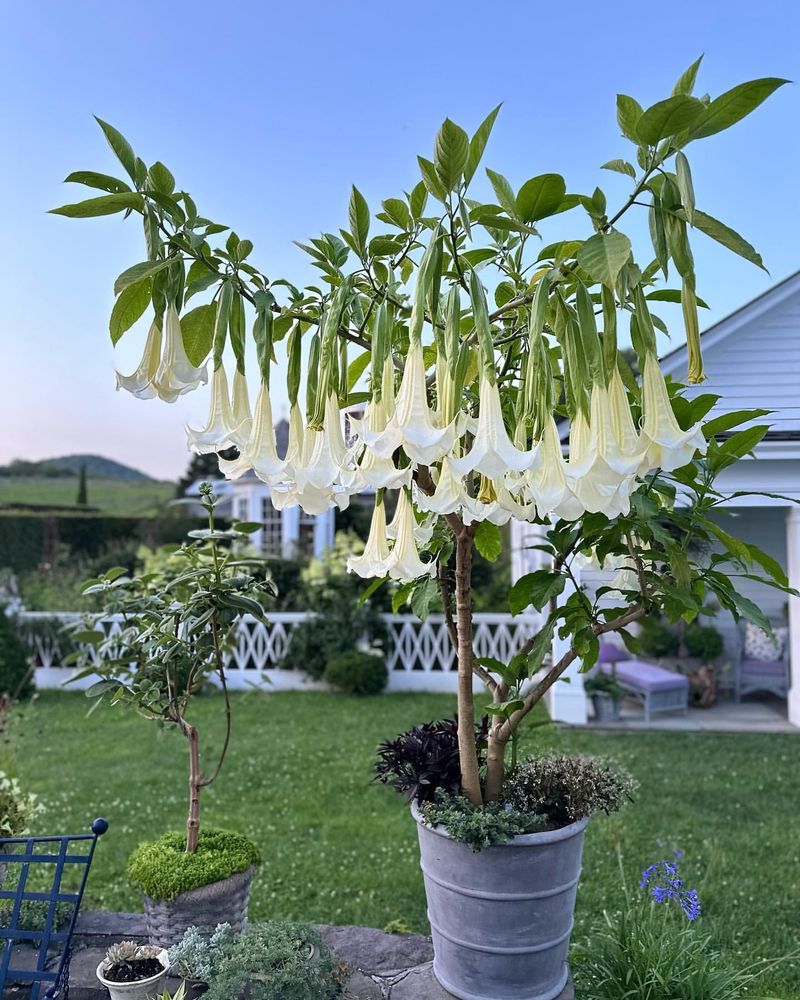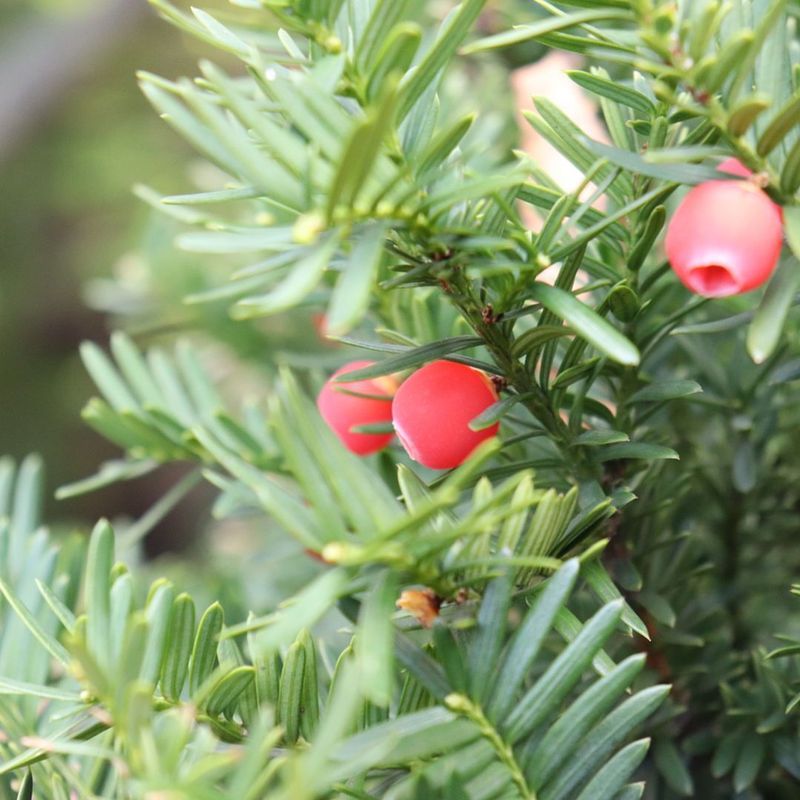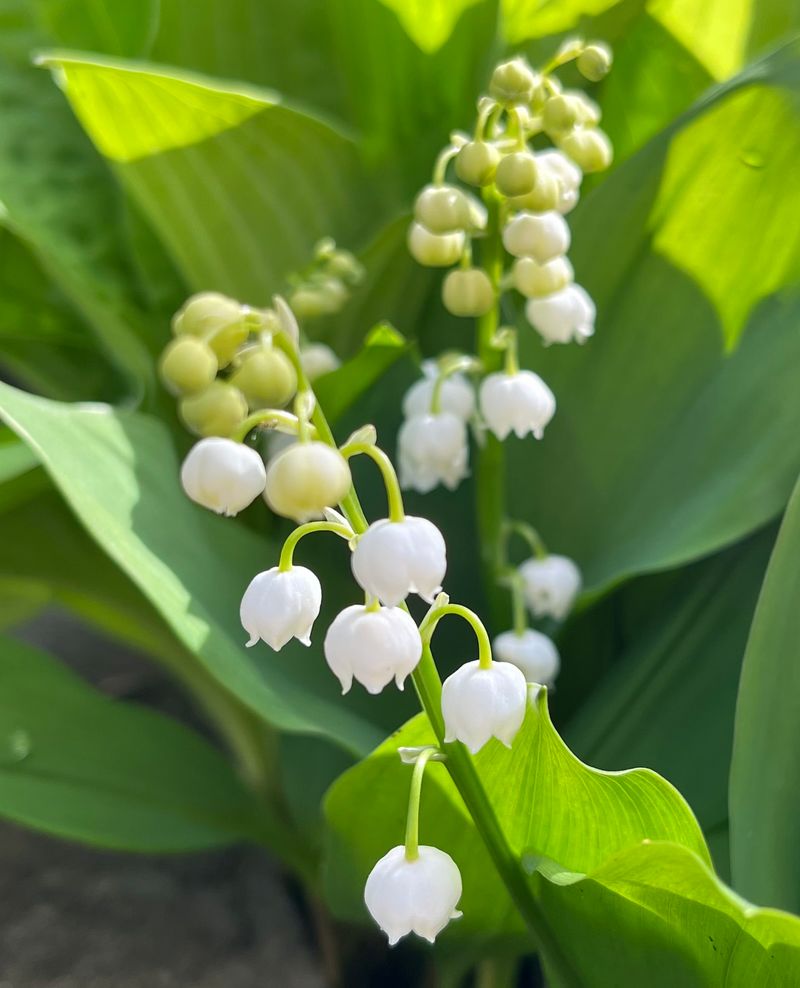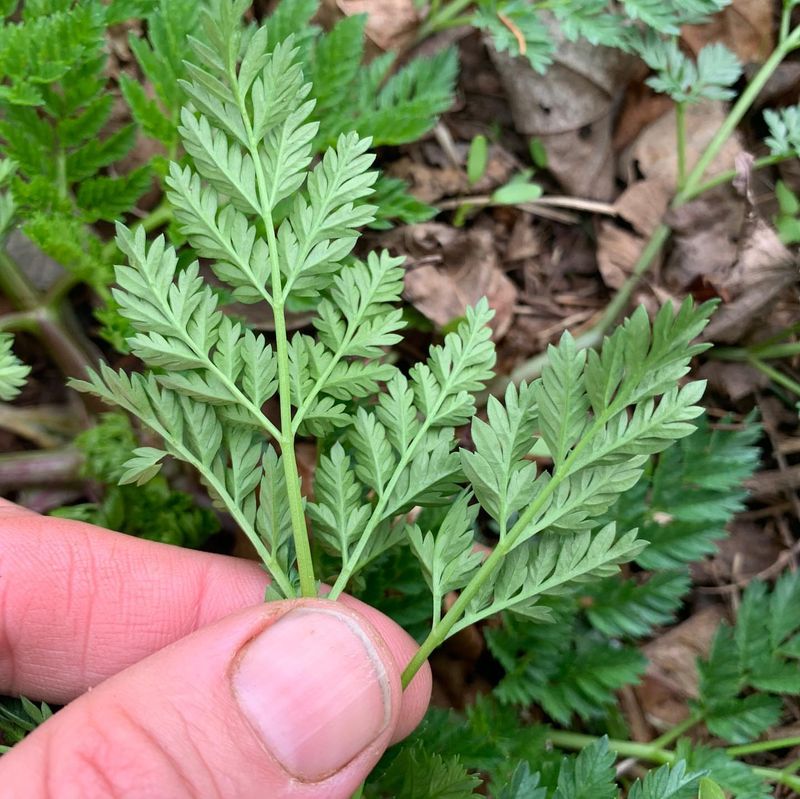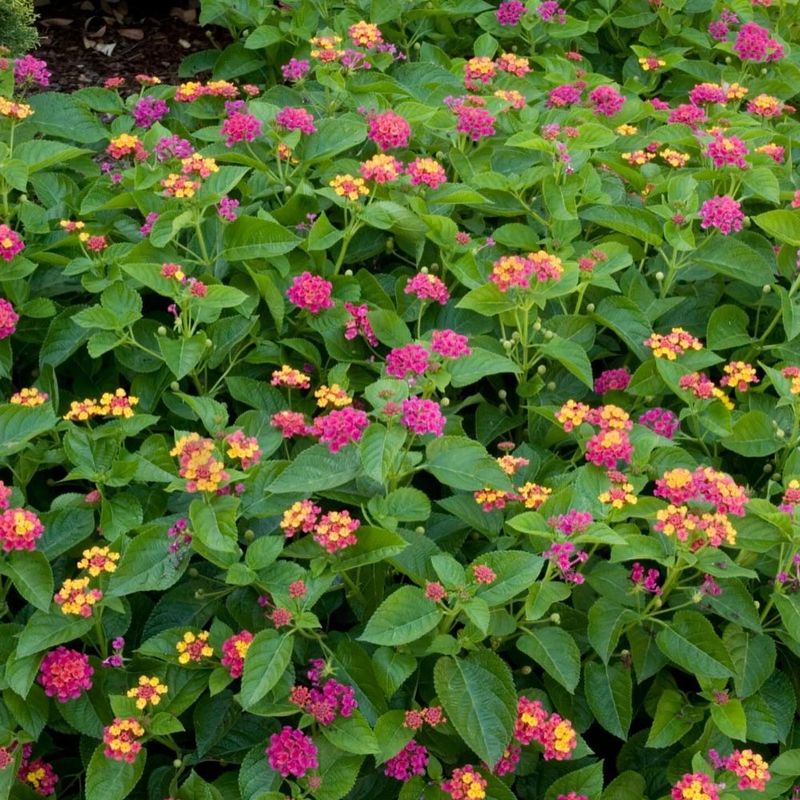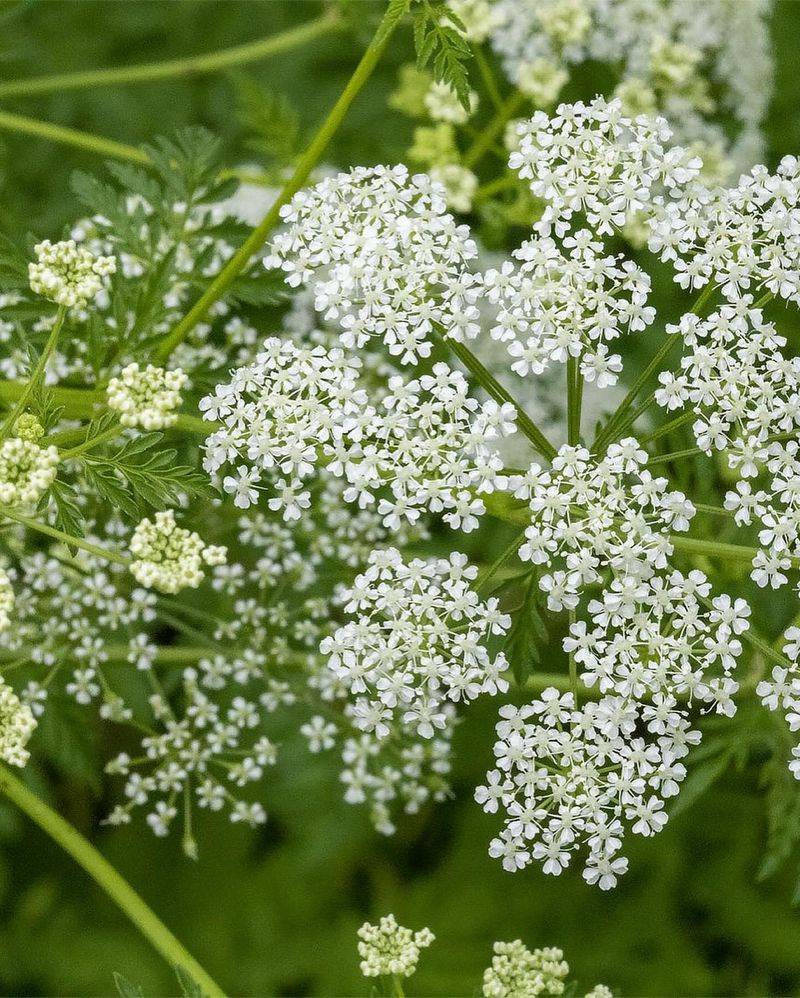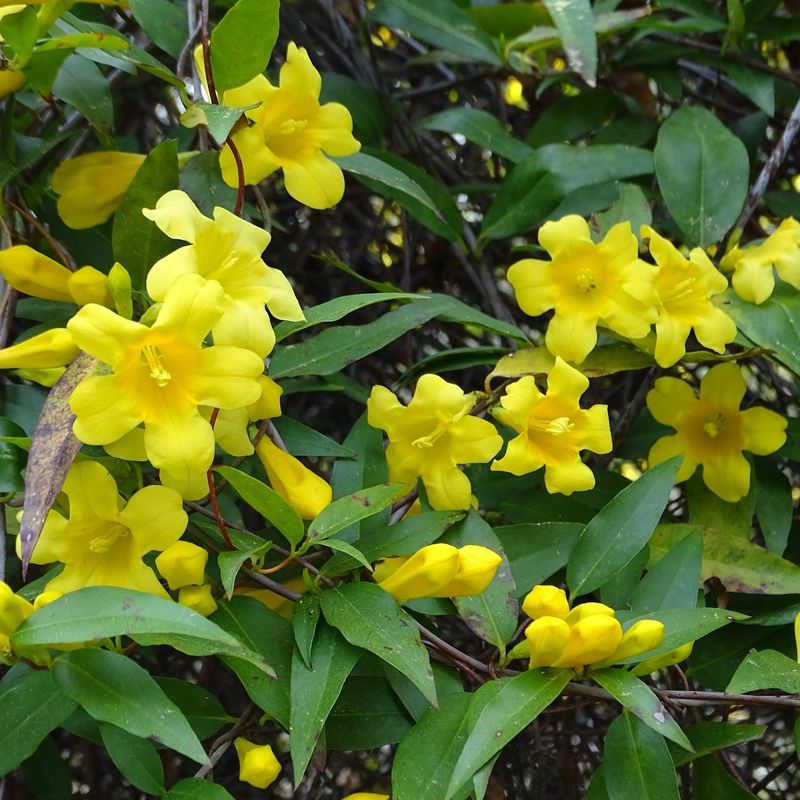Your California backyard should be a safe haven for family, pets, and wildlife. Unfortunately, many common plants contain toxins that can cause serious health problems or even death when touched or eaten.
Creating a beautiful garden doesn’t have to come with hidden dangers – knowing which plants to avoid is the first step toward a safer outdoor space.
1. Oleander: The Deceptively Beautiful Killer
Oleander contains cardiac glycosides that affect the heart muscle, making it one of California’s most dangerous plants. Even a small amount can be fatal to humans and animals.
Despite its stunning pink and white flowers, all parts of this plant are highly toxic. Ingesting leaves, stems, flowers, or even water in which oleander has been standing can cause severe poisoning.
Never burn oleander as the smoke carries toxic compounds that can harm your lungs.
2. Castor Bean Plant: Source of Deadly Ricin
Growing castor bean plants in your California yard is like keeping a biological weapon in plain sight. The seeds contain ricin, one of the world’s most potent plant toxins.
Children are especially vulnerable because the speckled beans look interesting and toy-like. Just one or two seeds can be lethal to a child if chewed and swallowed.
The tropical appearance might be tempting for landscaping, but the risk simply isn’t worth it.
3. Foxglove: Medicinal But Menacing
Those beautiful bell-shaped flowers hiding in your garden could stop a heart—literally. Foxglove contains digitalis, used in heart medications but deadly in uncontrolled doses.
Every part of the plant packs a toxic punch. Curious children might be drawn to the tempting tubular blooms that resemble little fairy houses.
Many Californians don’t realize that consuming even a small amount can cause irregular heartbeat, confusion, and potentially death if not treated immediately.
4. Angel’s Trumpet: Heavenly Looks, Hellish Effects
Angel’s Trumpet flaunts gorgeous hanging blooms but harbors a dark secret—every part contains dangerous tropane alkaloids. In California’s mild climate, these plants can grow into small trees, making them even more hazardous.
Exposure can cause hallucinations, confusion, and dilated pupils. Some teens have mistakenly used it as a recreational drug with devastating consequences.
The sweet fragrance might be alluring, but this plant belongs nowhere near family gardens.
5. English Yew: Ancient Poison, Modern Threat
Behind the deep green needles of the English Yew lurks a history of poison dating back centuries. Almost every part except the fleshy red aril around the seed contains taxine alkaloids.
Popular in California landscaping for its drought tolerance, many homeowners don’t realize the danger. The seeds are especially toxic if crushed or chewed.
Dogs frequently become victims when they chew on fallen branches or berries while playing in the yard.
6. Lily of the Valley: Tiny Bells, Tremendous Toxicity
Don’t let the delicate white bells and sweet fragrance fool you—Lily of the Valley contains over 30 cardiac glycosides. Though less common in Southern California, these plants thrive in northern coastal gardens.
Children are particularly at risk because the bright red berries that appear after flowering look like tiny cherries. Even the water in a vase holding cut Lily of the Valley becomes toxic.
Ingestion can cause vomiting, dizziness, rash, and in severe cases, cardiac arrest.
7. Water Hemlock: California’s Most Lethal Native Plant
Water hemlock doesn’t need fancy colors to be deadly—it’s considered North America’s most poisonous plant. Looking similar to Queen Anne’s Lace or wild carrot, it grows in wet areas throughout California.
The toxin cicutoxin attacks the central nervous system, causing violent seizures within 15 minutes of ingestion. Mistaking the roots for edible plants like parsnips has led to fatalities.
Even experienced foragers have died after misidentifying this innocent-looking plant with white umbrella-like flower clusters.
8. Lantana: Colorful Clusters, Concealed Danger
Lantana’s rainbow-colored flower clusters make it a California garden favorite, but few realize its berries contain pentacyclic triterpenoids that can be fatal to pets and children. The unripe green berries are particularly dangerous.
While adults rarely consume enough to cause serious harm, children might be attracted to the berry-like fruits. Symptoms include vomiting, labored breathing, and weakness.
Lantana can also become invasive in California’s climate, making it problematic beyond just its toxicity.
9. Poison Hemlock: Socrates’ Final Drink
Poison hemlock stands tall in California’s disturbed soils and roadsides, reaching heights of 8-10 feet. Famous for killing Socrates in ancient Greece, all parts contain coniine and other alkaloids that paralyze the respiratory system.
The white flower clusters resemble those of carrots or Queen Anne’s Lace, making deadly misidentification possible. Purple spots on the stems are a key identifying feature.
Just handling the plant can cause skin reactions in sensitive individuals, while ingestion can be fatal within hours.
10. Deadly Nightshade: Beauty With a Dark History
Deadly nightshade earned its ominous name through centuries of poisonings, murders, and warfare. The shiny black berries contain atropine, scopolamine, and hyoscyamine—powerful alkaloids that disrupt the nervous system.
Growing wild in parts of California, this plant’s purple-brown bell flowers and sweet berries might tempt children. Just two berries can kill a child, while 10-20 could be fatal for adults.
Renaissance women once used drops of nightshade to dilate their pupils for beauty—a practice that often led to blindness.
11. Yellow Jessamine: Sunshine-Colored Threat
Yellow jessamine vines might brighten up California trellises with golden trumpet flowers, but they harbor strychnine-related compounds in every part. Hummingbirds can safely feed on the nectar, but humans and pets cannot.
Children have been poisoned by sucking nectar from the flowers or making improvised straws from the stems. The sweet fragrance makes this climbing vine particularly deceptive.
Symptoms of poisoning include difficulty swallowing, muscle spasms, and respiratory failure in severe cases.

